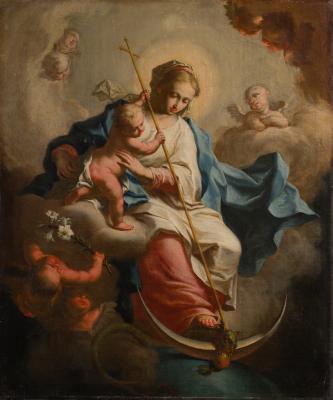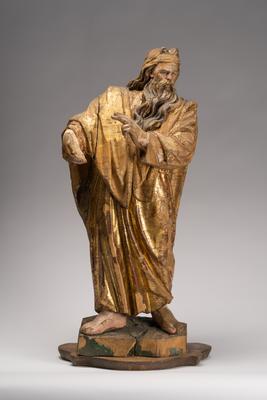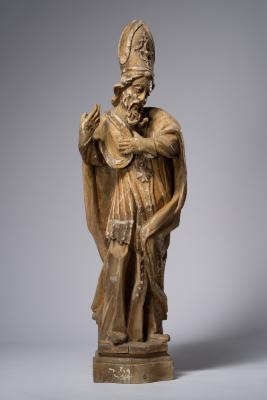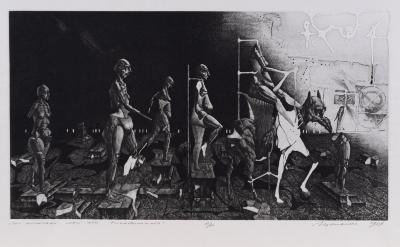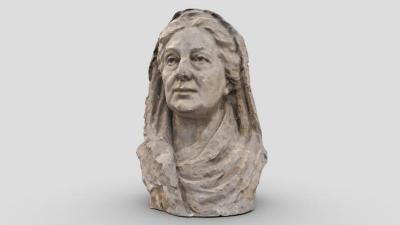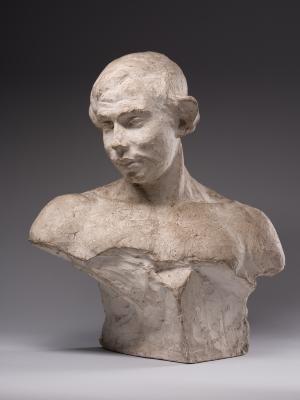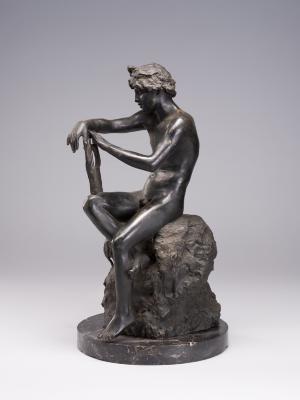Francesco Guardi, working on his 'Architectural Capriccio', was largely inspired by the works of his predecessor Canaletto. However, in contrast to Canaletto, he chose a vertical format on small sheets for most of his fantasy compositions. Guardi often interpreted elements from real architectural objects - Venetian palazzi, squares or small enclosed courtyards, which in Venice were called campi, depicting them from under colonnades of porticoes and galleries. Guardi repeatedly turned to this architectural view, at least we can find a number of similar images with minor changes in composition. The closest to the work from the gallery is a canvas from the collection of the Musée Jacquemart-André and an excellent sketch in gouache from the Metropolitan Museum of Art. The considerable similarity in composition, the positioning of figures and details suggest that the drawing was made as a preparatory study for a painting from the Musée Jacquemart-André. Canaletto's painting of a long colonnade with a small square, executed in 1765 for the Academy of Arts in Venice, may have been the original source of a series of these works. It should be noted that works with the same architectural appearance date from 1770–1780. The drawing from Lviv can also be dated to this period.







